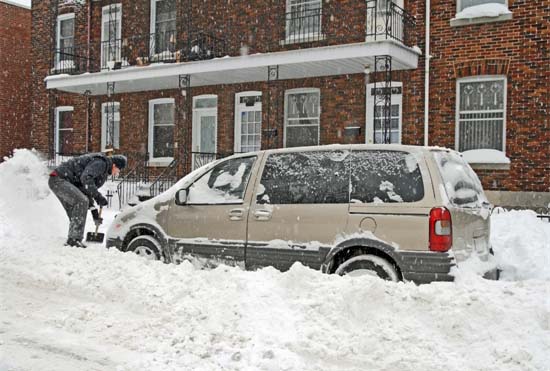Winter Storm Diego Caused Power Outages
Diego was the first large snowstorm of the season. The storm caused power outages in multiple states.
First Winter Storm 2018 Impacted Multiple States
The first major winter storm of the year was named Diego. Diego began on December 6 in Southern California with heavy rains and snow in higher elevations. The front moved through the Southern Rockies by December 7.
Diego moved into the southeast states on December 8 and stayed through December 9. These states were the hardest hit of the seventeen states the storm traveled through. Snow, ice, and high winds were all within the weather front. Mount Mitchel in western North Carolina received the most accumulation boasting 34 inches of snow. Many of the southeastern states visited by Diego received as much or more snow than annual accumulation totals.
Advanced radar and weather forecasting models needed information as Winter Storm Diego progressed. The
National Weather Service supplies weather updates by:
- Watches - Two types of watches issued:
- Winter Storm Watch - Conditions favorable for a winter storm event that is a threat to life or property
- Blizzard Watch - Conditions favorable for a blizzard event. Low visibility and winds of 35 mph
- Advisories - Two types of advisories issued:
- Winter Weather Advisory - Issued for blowing snow, 3 to 5 inches of snow in 24-hours, freezing rain with sleet and snow and/or more than 1/2-in of sleet
- Freezing Rain Advisory - Greater than 14-in of ice
- Warnings - Three types of warnings issued:
- Winter Storm Warning - Heavy snow 6 to 12 inches in 12 hours or 8 inches in 24 hours, or 1/2-in of sleet or more.
- Ice Storm - Ice accumulation of 1/4-in of ice or more
- Blizzard Warning - Blizzard conditions for at 3 hours
Strong storms of this type often begin with rain turning to ice then to snow. The atmospheric conditions of the area determine the length of time it takes the front to make the transition. Everything in the path is coated with a layer of ice then snow. Power lines and poles break with the weight and addition of wind. Power lines that route through wooded areas can be downed by trees and large limbs breaking under the weight. A whole host of other conditions can cripple the utility power grid for an area during winter storm fronts.
Loss of Power During a Winter Storm
Diego had many hazards that traveled with it. Travel was impaired or completely stopped and power lost for many utility customers. The
Charlotte Business Journal reported that Duke Energy had more than 700,000 customers who lost power in the storm. Southside Electric Cooperative reported they restored power to 10,000 of its customers in central and southern Virginia.
Electricity providers attempted to restore power as quickly as possible. Most outages are short-lived and end within minutes or hours depending on the reason for the outage. Cold, snow and ice add an extra layer of complication to repairing power outages. Industry and homes in remote locations can have extended outage times because of accessibility and number of customers without power.
The weather conditions that caused utility power to fail also added difficulty to the repair process. Intense storms slow or stop the repair process. Once the front passes, repairs begin. When there are widespread outages across many states, one can assume power outages can last from hours to days in length. Many small to medium size business only have emergency power that does not support the operation of the business. Often this includes the absence of Heating Ventilation and Air Conditioning (HVAC) Systems.
When power is lost and an industrial plant is shut down, all employees are sent away and these employees arrive in a power-free home. In most cases, this includes no heat, hot water, and lighting. A building cools off quickly with no heat. A multiple day power loss can result in the resident leaving the property until powered is restored. The best defense against a utility power loss is to have back up power for the home or industry.
We have over 35 years of experience with generators and associated equipment. Go to
Used Generators to see our current inventory.
Contact Us with questions concerning upgrading an existing system or installing a new backup power system.
Diesel Blog Team
| 12/13/2018 1:38:43 PM
|
0 comments